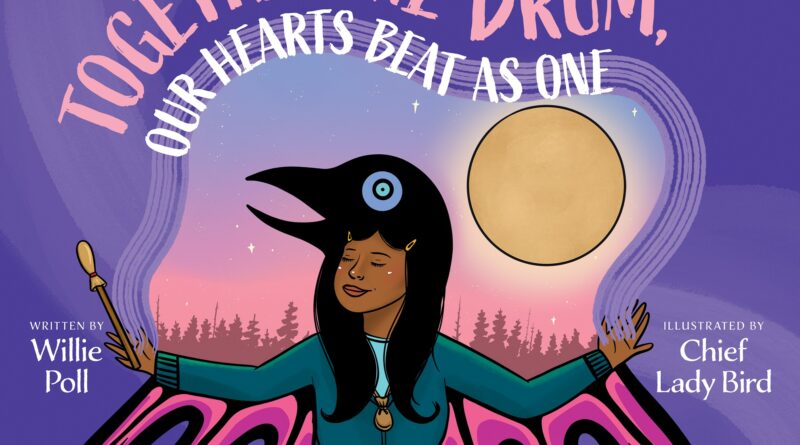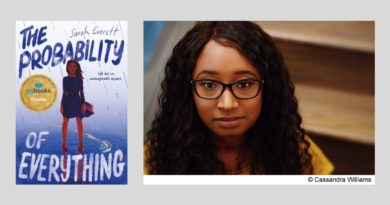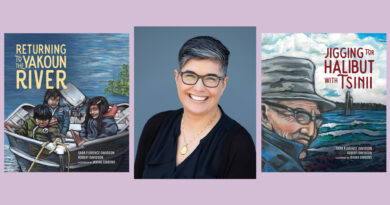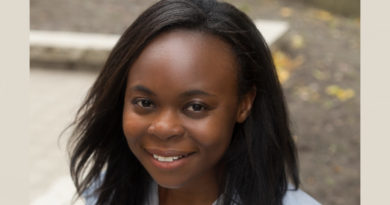Together We Drum, Our Hearts Beat as One: A conversation with debut author Willie Poll
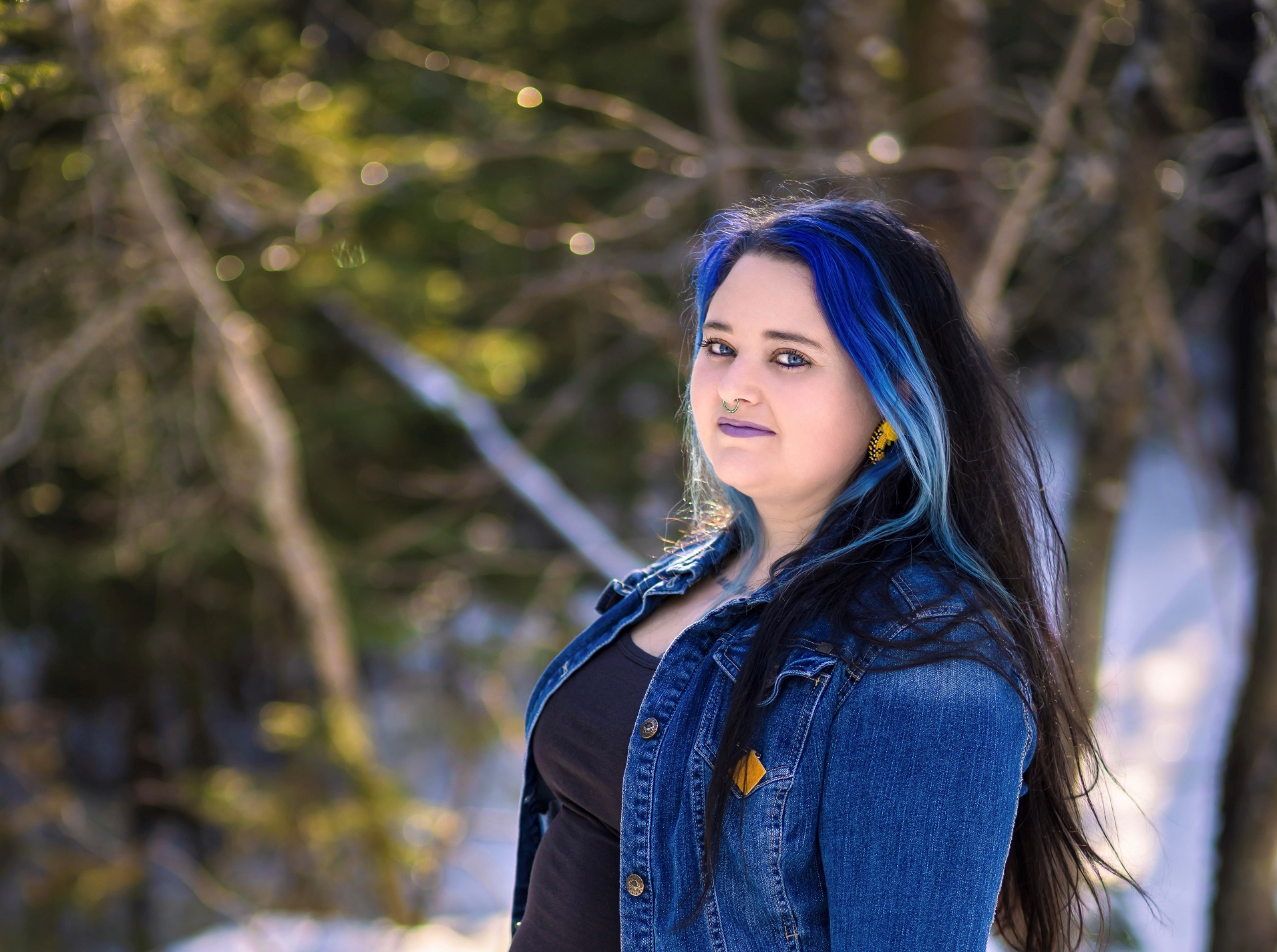
Willie Poll’s debut book Together We Drum, Our Hearts Beat as One (Arsenal Pulp Press) is a moving and inspiring coming-of-age story about Indigenous resistance and ancestral connection.
In this vivid picture book illustrated by acclaimed artist Chief Lady Bird, an Indigenous girl undertakes a transformative journey through the forest with the help of her ancestors.
Seeking adventure on her traditional territory, the determined young Anishnaabe girl is joined by a chorus of her ancestors in red dresses. They tell her that they remember what it was like to be carefree and wild, too – and when she is subsequently challenged by a monster named Hate, they inspire and aid her in thwarting it. From her experience, the young protagonist learns that she is capable of fending off any monster and making meaningful change in service of a better future.
Originally from Sault Ste. Marie, Ontario Poll describes her life as “nomadic”. She crossed and explored Canada from the west coast to the east coast, before making her home in PEI on the traditional territory of the Wabanaki and Mi’kma’ki people. Prior to living in PEI, she spent time in the north learning from the Gw’ichin people and in British Columbia among the communities of Xeni Gwet’in and Lil Wat. She even spent a couple of years connecting with her heritage and family in the United Kingdom, where she completed her MA in Archeology at the University of Chester.
The impetus for creating Together We Drum, Our Hearts Beat as One stemmed from Poll’s status as an active member of the Métis Nation of Ontario, as well as her experience working as an educator of Indigenous populations over the last 10 years. Currently, she works as an Indigenous educator for the Moose Hide Campaign, and her stories are inspired largely by the youth she meets. Poll spoke with SesayArts Magazine about the dream that inspired her debut book, the Métis grandfather who connected her to her ancestors and culture, her fervent desire to pass along Indigenous teachings — and how she came to race teams of sled dogs in the Yukon.
SM: Let’s start with learning a little about you. What would you like us to know about you?
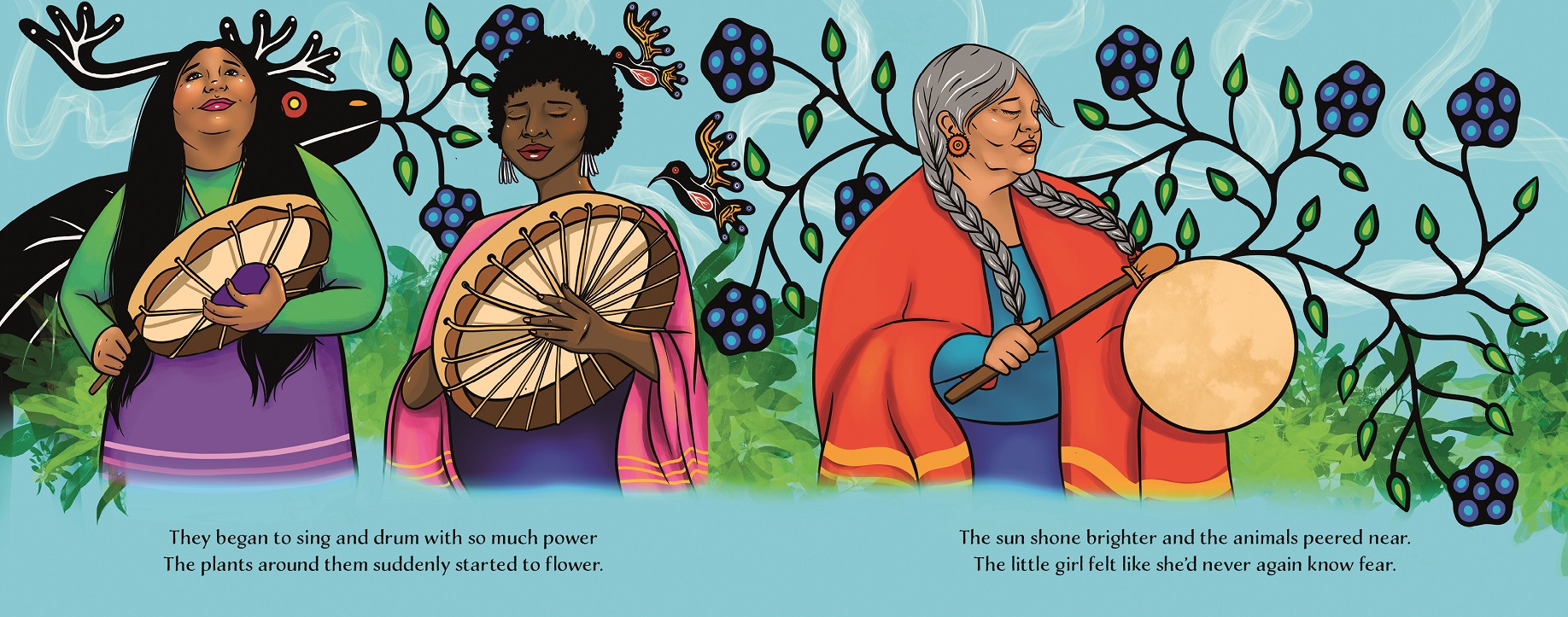
WP: Where to start! I’m just your average 29 year old who is obsessed with my pug and lives a life pretty full of adventure! I’ve been able to live quite a nomadic lifestyle that has taken me to many Indigenous communities across Turtle Island from my home of Sault Ste. Marie, Ontario to running sled dogs in the Northwest Territories to the beautiful valley of the Xeni Gwet’in people and the wild horses that reside there.
I’ve gotten to spend the last 10 years working in Indigenous education and being constantly inspired by First Nation youth. I’m currently living in PEI on the traditional territory of the Mik’ma people and am still in awe of the beauty here. I spend most days by the ocean.
SM: Congratulations on your first picture book! It is beautiful and conveys compelling themes of bravery, familial roots, ancestral solidarity, the strength of matriarchs, the power of music and love triumphing over hate. What inspired you to write the book and what was the developmental journey like?
WP: The book was largely inspired by the youth I’ve met along my journey. It seems no matter which community I became a part of, each had their own stories of MMIWG2+. I’ve seen the additional barriers that Indigenous girls, women, and two spirit people face, and it’s always been top of mind during the work that I do with Indigenous youth.
Within my own family I’ve also seen the additional traumas that my grandmas, aunties, cousins, and mother have faced to become the resilient matriarchs they are today. Indigenous or not, women in Canada have a 1 in 4 chance of experiencing violence in their lifetime, but we never flip it and say that men have a 1 in 4 chance of becoming a perpetrator of violence.
I think for me, I wanted the narrative to change. I wanted to show a story where there were no victims, only strong women paving a path for a better future. I didn’t intend on ever writing a children’s book, but I awoke from a dream of women in red dresses, and I began writing. At the end, this was the result, and I loved it so much I knew I had to try to show the world.
SM: Do you want to speak about the relationship between the text and the illustration?
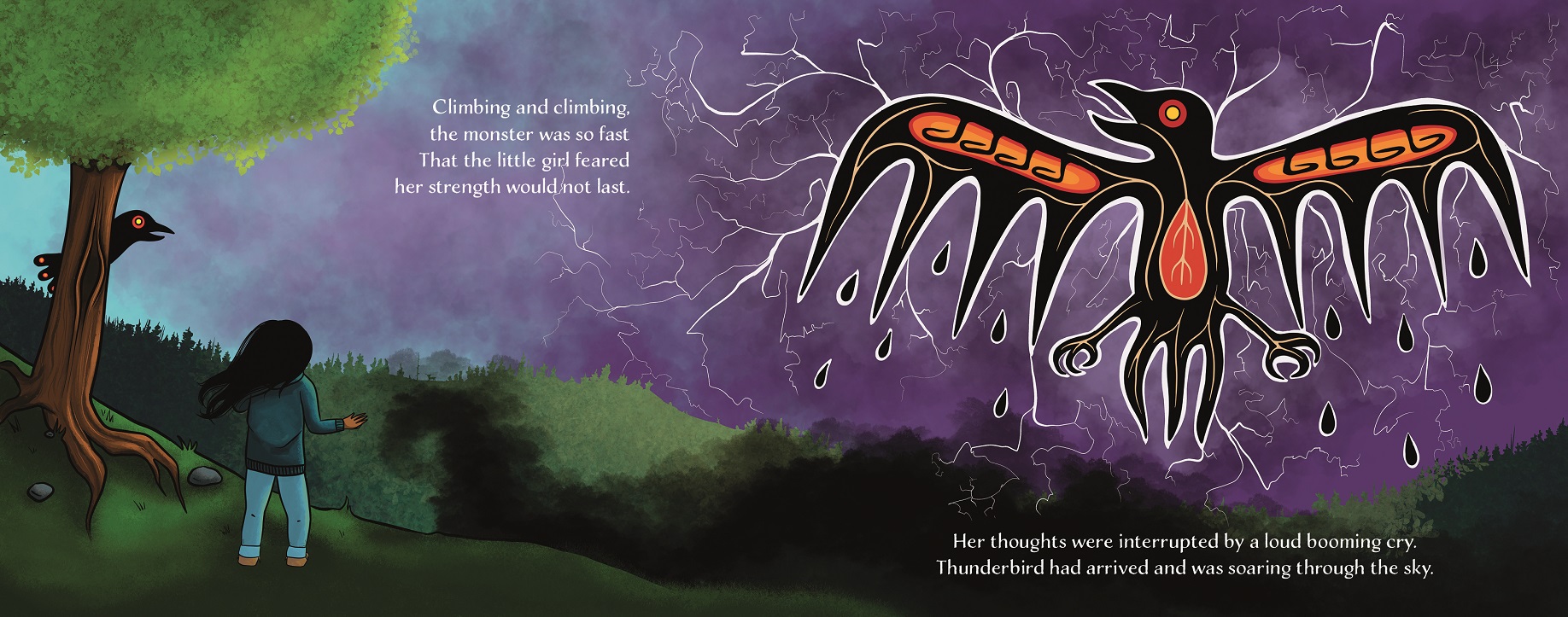
WP: The day Chief Lady Bird agreed to work with me on the story I knew the illustrations would be just as powerful as the words, but in all honesty, they are even stronger. Chief Lady Bird truly intertwined her own stories, personality, and culture into the story and gave me something more beautiful than I could have imagined. Most of the time I had a hard time explaining what I saw on the pages, but it was like she could read my mind and would come back to the table with something I couldn’t have dreamed up if I tried.
The story came shortly after I had driven the highway of tears for the first time, which for those who don’t know, is a stretch of highway in BC that is notorious for Indigenous women and girls going missing. Within the story one of the images has a highway sign with tears on it and is encircled in sweet grass. It always reminds me that although this is a children’s book, I really hope adults read between the lines and recognize that Canada has some serious issues.
SM: I know that you have a Bachelors of Arts in Indigenous studies from Laurentian University and have worked in education for a long time now. I can already envision Together We Drum, Our Hearts Beat As One in elementary classroom. How do you think teachers might teach with Together We Drum, Our Hearts Beat As One?
WP: I really hope that teachers use this story to speak to the racism in Canada and how it effects Indigenous people, but also how women, girls, and LGBTQ2+ people are facing additional barriers. I think that gender discrimination is still something that isn’t talked about as often as it should be and too many people are still in denial that it exists. Change begins with young people and I have seen first hand how youth are changing our society for the better! I hope that this story shows not only the traumas that Indigenous people face but also the love and the strength within Indigenous communities.
SM: I hear that you just became the education director of the Moose Hide Campaign, an incredible Indigenous organization dedicated to eradicating violence against women and girls. What excites you most about this role?
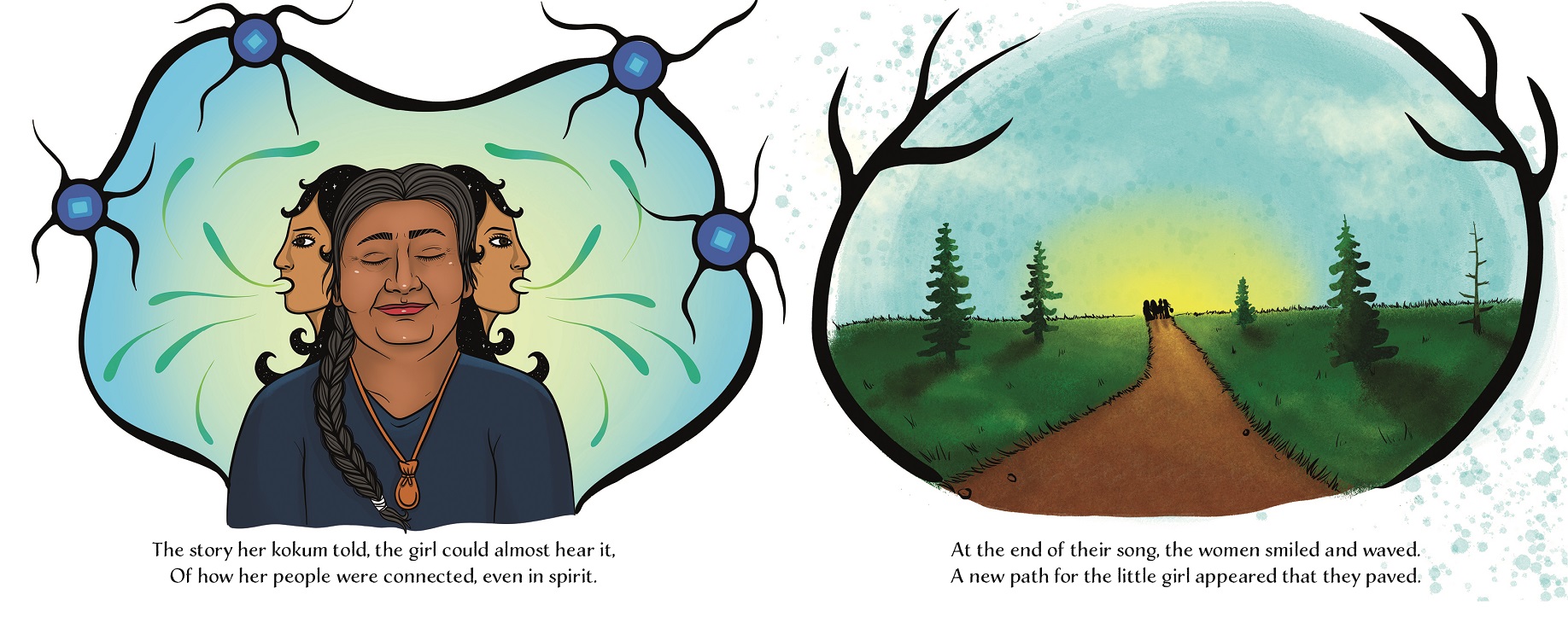
WP: The Moose Hide Campaign has been a big part of my life for the last couple years. I’ve been to many MMIWG2+ rallies and support events and often LGBTQ2+ people and women make up majority of the supporters. The Moose Hide Campaign has worked hard to change the narrative and bring men and boys into the space of advocacy and change. It’s been really incredible seeing how the campaign has reached SO many people across the Nation (over 3 million pins have been given out!) and how it is taking the topic of violence out of the shadows and shining light on it. The campaign is so powerful and I am so proud and honoured to be a part of it. Going into this role it gives me an opportunity to continue working with youth across Turtle Island and helping to support them as they build a better future for all of us.
SM: I also hear that, after university, you moved around Northern Canada, living off the grid with no electricity or running water . . . while learning to manage a dog sled team with sometimes up to 25 dogs. You are the first person I know with experience managing sled dogs, and I would love to know anything and everything that you would like to share about this experience!
WP: As a kid, my grandpa used to fill my head with stories of family traplines and a few crazy relatives who ran sled dogs. I don’t think he knew it, but my grandpa was really my only connection to my ancestors and culture at the time, and these stories acted as the fragile piece of ribbon that kept me feeling connected to who I was. I always knew who I was but being a white passing family, it wasn’t mentioned very often. Those stories lived in me long after he passed, and I think they sparked an obsession to stay connected to him but also to my culture.
Dog mushing was the answer. It always felt like it was something I was born to do and so when I got an interview to go run dogs for a tourist lodge outside of Yellowknife, NT, I knew I had to go. In the interview I remember them asking a question that went something like “Do you feel comfortable running up to 12 dogs?”. I said, “of course I do”. In hindsight I think they meant “Do you have experience running up to 12 dogs?”, which I had absolutely never even come close to doing. But I knew I could. In my mind, I was born to do it.
I spent a few years travelling around the North and getting to run dogs in all kinds of amazing places. All of which were pretty off-grid, and I had a few years of Netflix to catch up on when I returned. I still miss the sled dogs, especially on every first snowfall of winter, but my connection to community and my culture no longer rely on reliving old stories; now I get to make my own.
SM: What question didn’t I ask you that you wish I had (and what is the answer)?
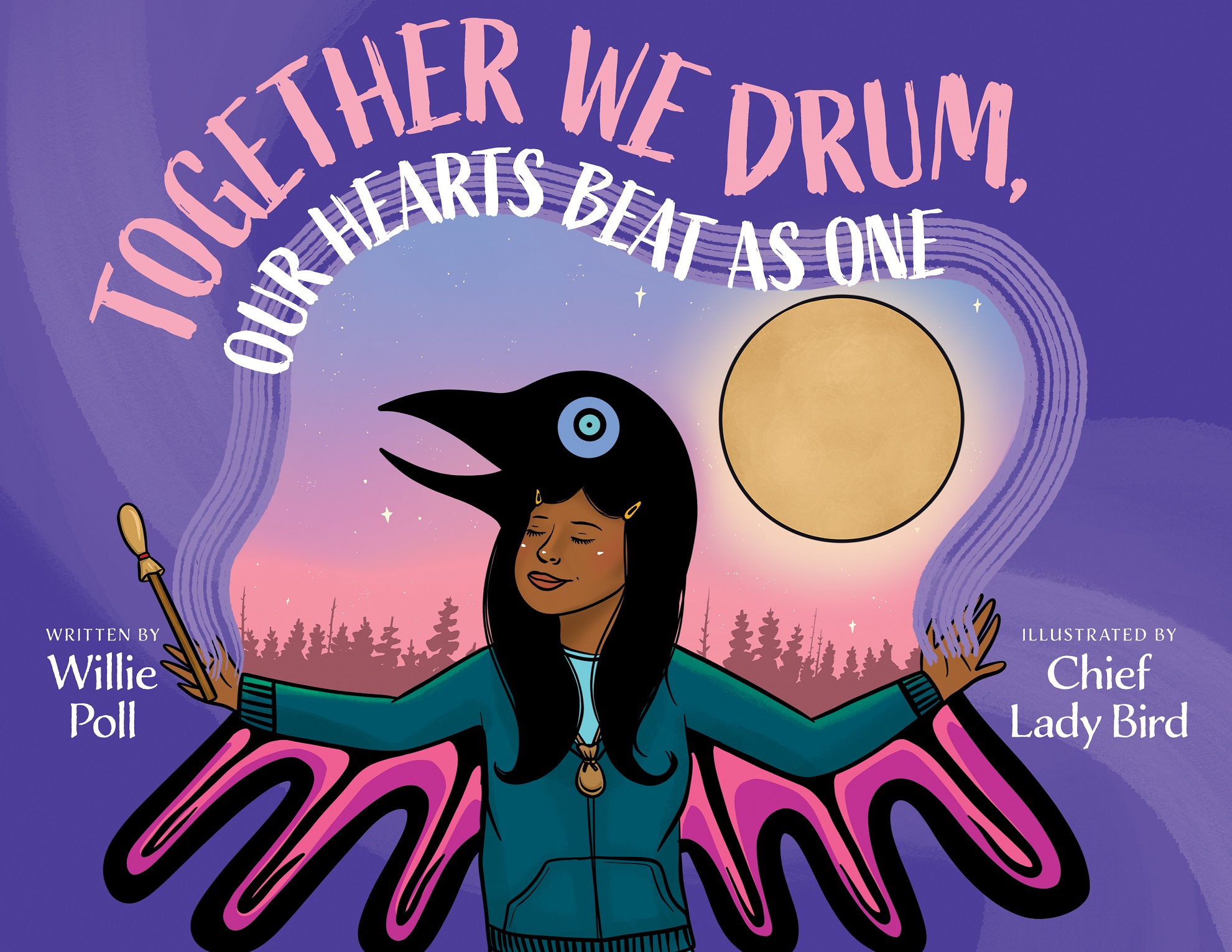
WP: I think an important question is always “How do you speak to MMIWG2+ in a children’s book?”
Although the story has so much hidden meaning, it is told in a completely age-appropriate way. The story on the outside is about a little girl who seeks out adventure, but of course her journey has obstacles. Through the ancestral connection to her culture and matriarchs, she is able to overcome these obstacles, use her voice, and realize her own power. The book is exactly what I want Indigenous kids to see: that they are capable of overcoming anything. That their path may sometimes feel dark but that they can pave their own way, take up their space, and be loud. Be so loud that all your ancestors come to join you, and you wake up the whole world, because that’s what we need. We need people to wake up and be part of the solution, and I truly believe Indigenous youth are the ones who will lead us there.
© Arpita Ghosal, SesayArts Magazine, 2022
About The Author
Arpita Ghosal
Arpita Ghosal is a Toronto-based arts writer. She founded Sesaya in 2004 and SesayArts Magazine in 2012.
Visit About Us > Meet the Team to read Arpita’s full bio …

